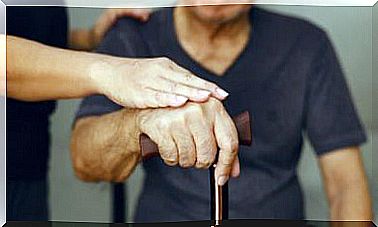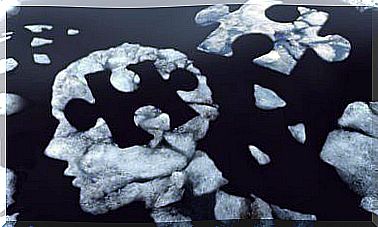Transfer And Countertransference

Transference and countertransference are two fundamental terms of psychoanalysis. They serve as pillars for clinical practice, since they are a fundamental part of the analytical relationship. Furthermore, although they are two different concepts, at the same time transference and countertransference are clearly inseparable.
The analytical encounter gives way to a patient-analyst interrelation, in a space where the unconscious is allowed to circulate as freely as possible. The dynamics between transference and countertransference, on the part of the patient and the analyst respectively, begins in this interrelation.
What is the transfer?
The term transference is not exclusive to psychoanalysis, but is also used in other fields. Now, what does seem to exist is a common denominator: it refers to the idea of displacement or substitution of one place for another. Thus, for example, it can be observed in the doctor-patient or student-teacher relationships.
In the case of psychoanalysis, it is understood as the recreation of childhood fantasies where their destiny is the person of the analyst. The transference constitutes the superimposition of something previous on something current, thus becoming a privileged area to advance in the direction of the cure.

In its beginnings, Freud considered the transference as the worst obstacle to the therapeutic process. He assumed it as a resistance on the part of the patient to access his unconscious material. However, it didn’t take long for him to realize that his role transcended that resistance.
Thus, Freud, in his text Dynamics of the transference of 1912, presents the transference as a paradoxical phenomenon: despite being constituted as resistance, it is fundamental for the work of analysis. He distinguishes, at this moment, the positive transference – made of tenderness and love – from the negative transference – vector of hostile and aggressive feelings.
Contributions of other psychoanalysts on the concept of transference
After Freud, a great deal of work has been devoted to the question of transference, rethinking the subject and comparing it with the original development of the phenomenon. All agreeing that it is based on the relationship that occurs in the therapeutic situation between the analyst and the patient.
Thus, in Melanie Klein the transference is conceived as a re-enactment during the session of all the patient’s unconscious fantasies. During analytic work, the patient will evoke his psychic reality and will use the figure of the analyst to relive unconscious fantasies.
In Donald Woods Winnicott’s conception, the phenomenon of transference in analysis can be understood as a replica of the maternal bond, hence the need to abandon rigorous neutrality. The use that the patient can make of the analyst as a transitional object, as described in his article “The use of an object” in 1969, gives another dimension to transference and interpretation. He affirms that the patient needs the therapeutic link to reaffirm his existence.
Transfer bond
Although it has been said that the transference has to do with the recreation of childhood fantasies about the figure of the analyst. For this to happen, a transference link must first be established, allowing the patient to recreate and work with them.
In order to create the bond, it is necessary that, once the patient accepts his desire to work on what happens to him, he goes to meet an analyst who assumes knowledge of what is happening to him. Lacan named it as “Subject supposed to know.” This will produce the first level of trust in that relationship, which will give way to analytical work.
However, along the analytic path there may be manifestations in the transference bond to which the analyst has to be attentive and handle them in a timely manner, such as: the signs of falling in love with the therapist, the tendency to check the power of their attractions by doing descending the analyst to the position of lover, the tendency to follow the therapist’s instructions with little questioning, rapid improvements without work and parallel effort, and other more subtle signs, such as being frequently late for appointments or frequent allusions to other professionals.

Of course, not only do these types of situations occur on the part of the patient, but countertransference manifestations can occur. In this sense, the analyst also has to be attentive and analyze himself if they occur: arguing with the patient, having impulses to ask the patient for favors, dreaming about the patient, excessive interest in the patient, inability to understand the material to be analyzed when the patient refers to themes similar to those experienced by the analyst, carelessness in maintaining the frame, intense emotional reactions related to the patient, etc.
What is countertransference?
The term countertransference is introduced by Freud in “The future perspectives of psychoanalytic therapy” of 1910. It is described as the analyst’s emotional response to stimuli that come from the patient, as a result of the influence of the latter on the analyst’s unconscious feelings.
The analyst must be attentive to these phenomena that could occur for a simple reason: They could become an obstacle to the cure. Although there are also authors who argue that everything felt in countertransference, which is known to have nothing to do with the analyst, can be returned or pointed out to the patient.
It may be that the feelings that the patient arouses in the analyst, when they are returned to him, generate an awareness of them or a greater understanding of what is happening in the therapeutic relationship. Something that perhaps had not been shared with words until that moment. For example, reliving a childhood scene and the analyst begins to feel sad; however, the patient as rabies. The analyst can give back what he is feeling so that the patient establishes contact with the real emotion that is masked with anger.
Relationship between transfer and countertransference
On the one hand, the countertransference is defined by its direction: feelings of the analyst in relation to the patient. On the other hand, it is defined as a balance that continues to be one more proof that the reaction of one is not independent of what comes from the other. That is, the countertransference is related to what is produced in the transfer, so that one influences the other.
In this sense, the countertransference can be an obstacle if the analyst acts on it. If he lets himself be carried away by those affections that he begins to feel towards the patient – love, hatred, rejection, anger – he breaks the law of abstinence and neutrality by which he must be governed. There, far from benefiting analytical work, it harms it.
In such a way that the starting point is the transfer of the patient. This communicates – or tries – all his experiences and the analyst only responds to what the patient says with what seems pertinent, without placing his own affections in the interventions he performs. The patient relives the fantasies, acts on them, but does not do so consciously, for this reason the interpretation plays a fundamental role in the cure.

Function of transference and countertransference
The analysis presupposes that the patient’s transference link with his analyst has already been established. It is in the game between transference and countertransference that affects, unconscious desires, tolerances and intolerances will emerge.
From the transference relationship, the analyst will be able to make the interventions: interpretations, indications, session cuts, etc. Of course, only if the transferential link is in place will it be possible to do more in-depth work. Otherwise, the interventions will not have the same effect.
For all this, in the analytic relationship the rigorous neutrality on the part of the analyst, together with a floating listening, which strips him of his subjectivity -of his own affects and history-, is what will allow the transference to be used as a channel for work in session. The analyst has to become a kind of blank screen, where the patient can transfer his unconscious material.









